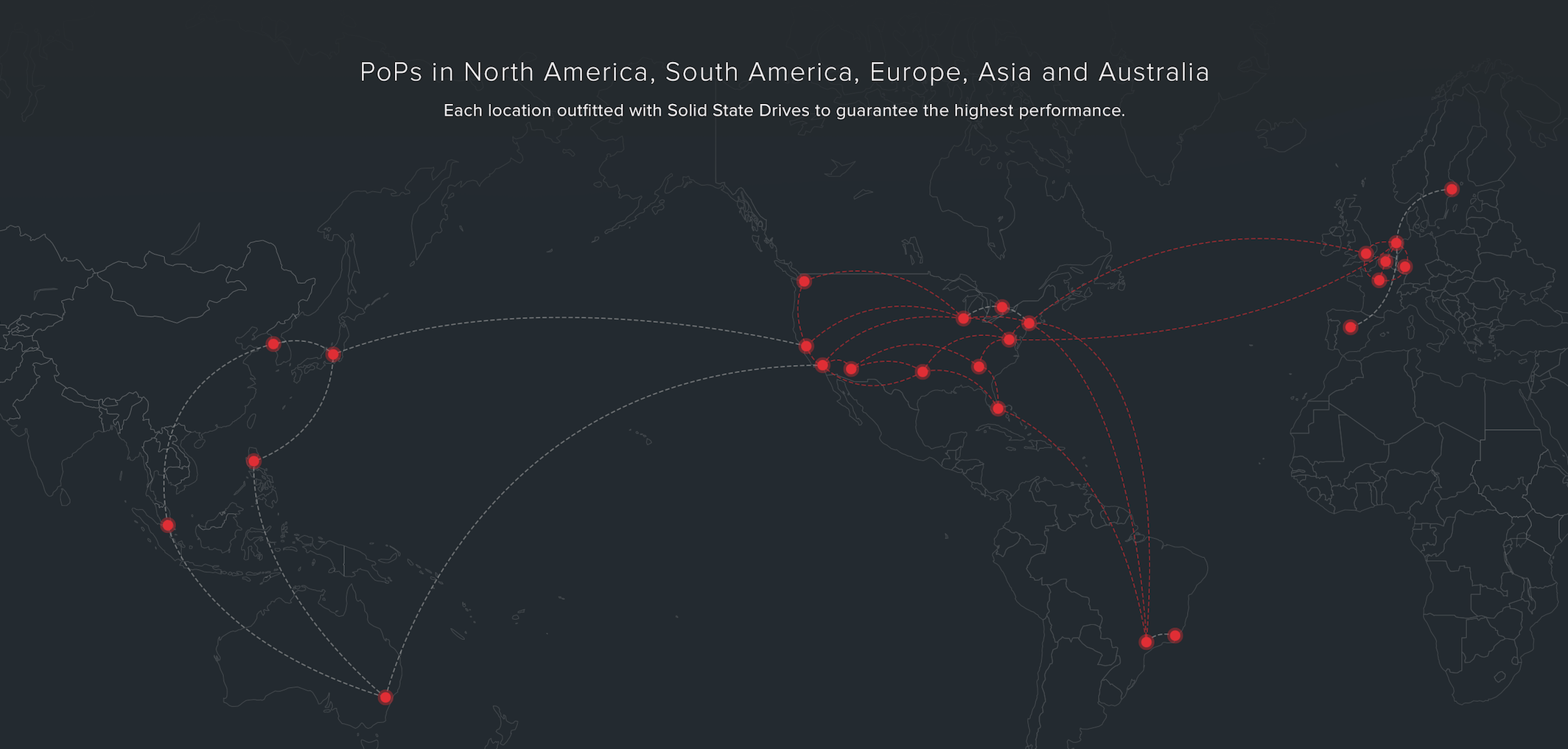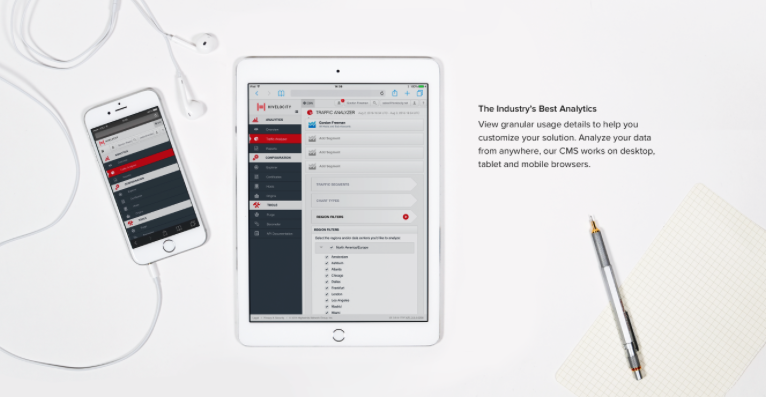With the launch of our Content Delivery Network or “CDN” product just around the corner, we want to ensure our customers fully understand what a CDN is, how it works, and what it costs when compared to traditional dedicated servers. Additionally, we want to explain what our CDN product will look like and help you determine if it is or is not a good solution for you.
The Hivelocity CDN consists of 28 points-of-presence or “POPs” scattered across the globe. Each of these POPs is indicated in the map below. Each POP location was chosen with the singular goal of creating a network that will provide the best performance to as much of the world as possible. The idea of a CDN is to bring media rich content geographically closer to the people viewing the content and in turn, provide an optimal experience for the people consuming that content. A CDN improves download speeds, reduces buffering, and improves application performance by shortening the distance between the users and the servers hosting the content. The beauty of a CDN from the content provider’s perspective is the ability to have that content distributed all around the world while only having to upload that data to one “origin server”. Once the content is uploaded to the origin server, the CDN distributes that content across each of the POPs within minutes. At that point, anyone requesting the content will receive the content from the POP that is closest to their physical location. People in France will pull content from our Paris POP, people in Minneapolis will pull data from our Chicago POP, people in Alaska will pull data from the Seattle POP, and so on. This proximity logic works around the globe ensuring an optimal experience for every end user.

We will be offering our CDN in 4 zones. The basic plan will include all 18 POPs located throughout North America and Europe. The continents of Asia, Australia, and South America are each available a la carte at a higher price due to the higher cost of bandwidth in those regions. With that said, just because you purchase the basic North America & Europe plan does not mean people in Asia, Australia, or South America are not able to view your content. With the purchase of our basic plan, people in the a la carte continents simply view content deriving from the closest POP in North America or Europe. For instance, with the purchase of the basic plan (North America & Europe), consumers in Brazil would utilize the Miami POP and consumers in Asia would utilize the California or Eastern Europe POPs.
So how exactly does CDN billing work? As you know, with a dedicated server, you are typically provided with a lump sum of monthly bandwidth (ex. 10TB or 100TB) on a certain sized port (ex. 100Mbps or 1Gbps). So long as you do not exceed the amount of bandwidth included each month, you just pay the base rate for your server. If, however, you do go over the included bandwidth you then pay overage fees of $.xx per GB. A CDN works differently. With a CDN, you pay per GB of outbound data transfer right out of the gate and there is no port size limitation. Our CDN starts at $.04 per GB, so if you only have outbound data transfer of 500GB one month, your bill would be 500 x $.04 = $20. If the following month you push 5,000 GB of data, your bill would be 5,000 x $.02 = $100. As the amount of data you transfer each month grows, your price per GB goes down AND you never have to worry about port saturation or upgrades. So if your Pokémon or Grumpy Cat video goes viral and all of a sudden your bandwidth consumption bursts to 40Gbps, our CDN handles it with no issues or action required by you. While pricing is still not official, we intend to offer plans as low as $.007 per GB once you achieve 4PB (petabytes) or more. More to come on that soon. Analytics of your data usage, what your users are viewing, and where your users are located is all available to you via our GUI.

So how do you know if a CDN makes sense for you? Based on our great server prices, how much bandwidth we include with each server, and the performance of our highly diverse global reaching network, a lot of times a CDN is not your best option. If most of your site’s visitors, app users, or server admins are located in domestic USA, the performance of our dedicated servers and standard network (8 intelligently routed transit providers + 4 public peering fabrics) will in all likelihood perform brilliantly. We have customers from over 130 countries using our servers because our network performs exceptionally on a global scale. If, however, your site is media rich, contains vast amounts of images for consumption, streams video (live or recorded), streams audio (live or recorded), AND you cater to an audience both domestic and abroad, a CDN is something you should at least consider. If during peak times your outbound bandwidth usage surpasses 1Gbps then you should also at least consider a CDN as well. Typically, dedicated servers include either a 100Mbps port or a 1Gbps port, with larger ports like 10Gbps or 40Gbps potentially becoming very expensive depending on usage. With a CDN, you only pay per GB, regardless of the throughput at peak time. Whether you burst to 200Mbps, 1Gbps, or 30Gbps, our CDN can handle the throughput, and, no matter how high the peak, you always pay per GB only.
If you would like more information about our upcoming CDN product please email sales@hivelocity.net or open a live chat with our Sales Dept. from our top navigation bar.
Additional Links:
Looking for more information on Hivelocity? Search our blog or look over our about page!
In need of more great content? Interested in cPanel, Private Cloud, or Edge Computing? Check out our recent posts for more news, guides, and industry insights!


